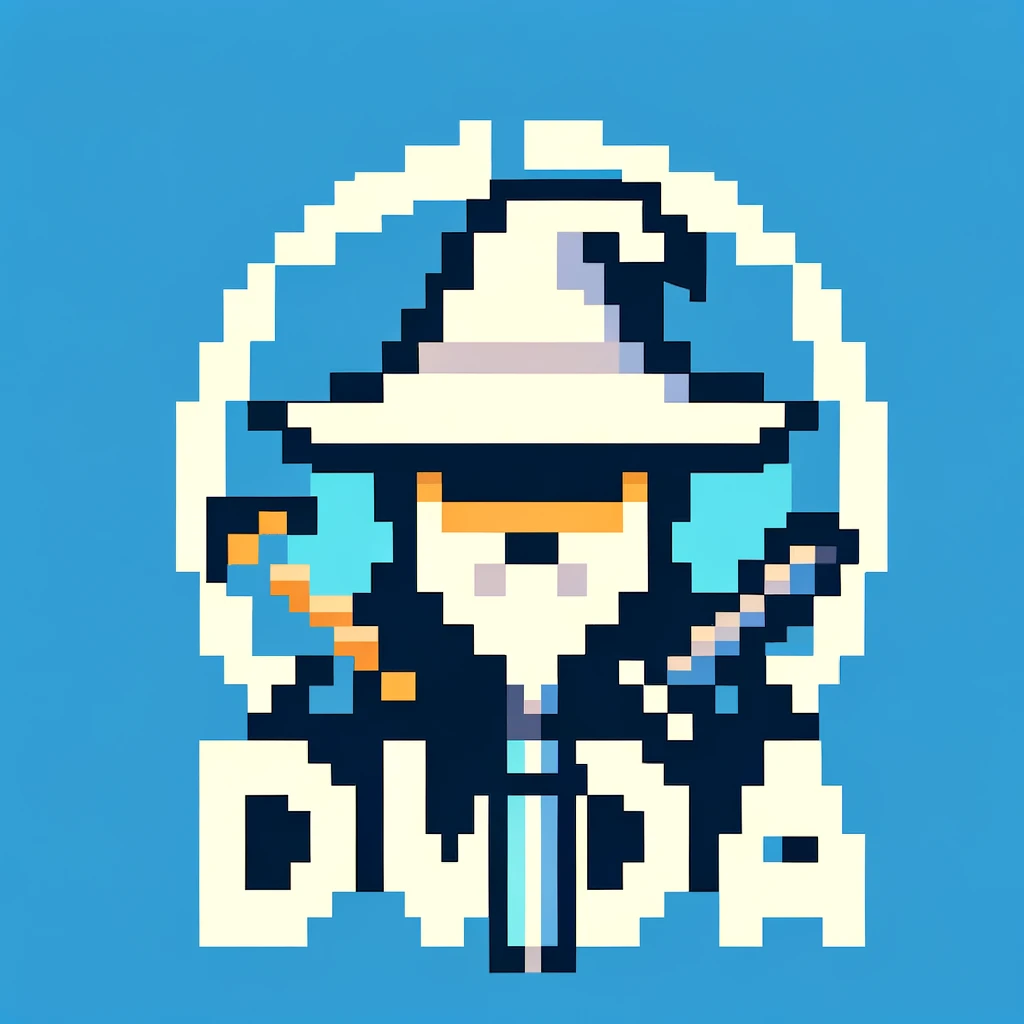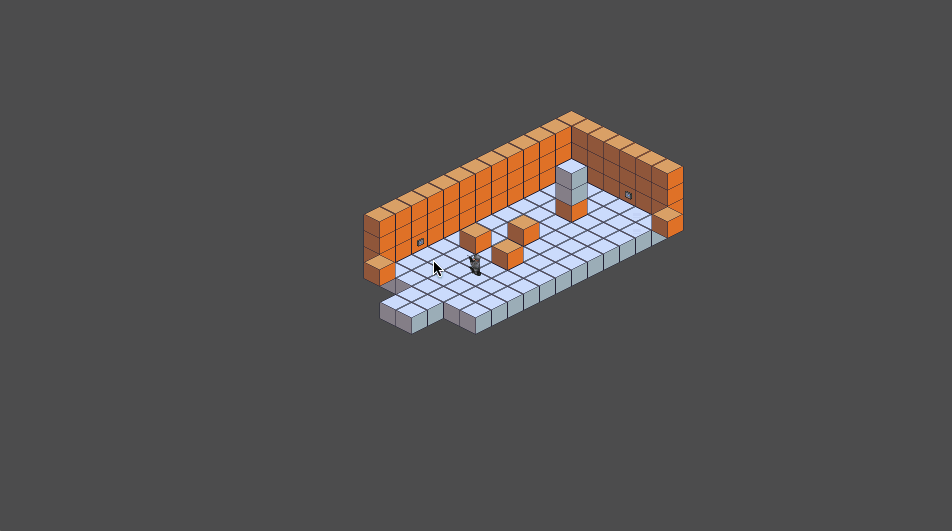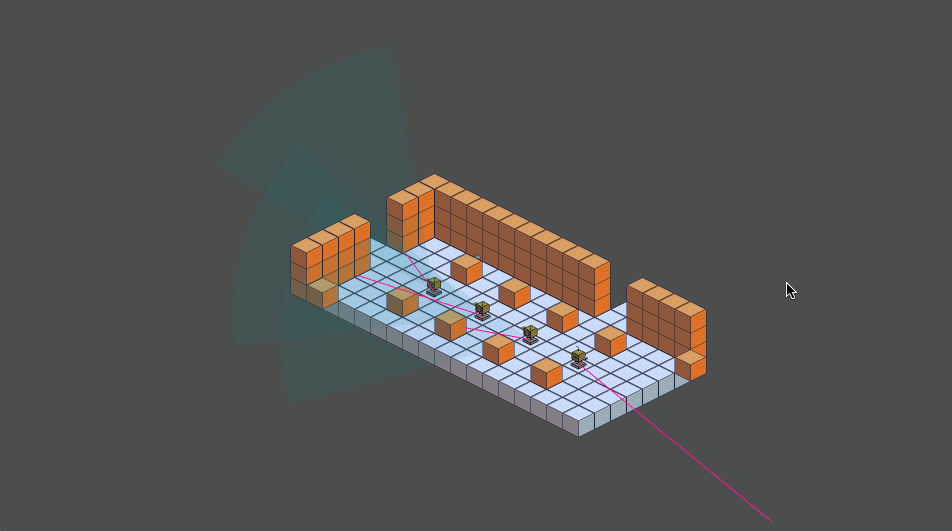Verisimilitude in Fake Worlds



While Line of Sight development is currently paused due to real-life concerns like income, rent, health insurance, and other boring stuff like that, that doesn't mean I can't share some insights from the development process.
Regardless of what kind of game you're making - or story you're telling - there's one important property that can make your world feel real - maybe even "alive": Verisimilitude.
Verisimilitude is the "lifelikeness" or believability of a work of fiction.
In some fictional worlds, this might mean that shopkeepers and other NPCs can't see you when you put a bucket on their heads and in others it might mean that shopkeepers and other NPCs get angry and attack you when you put a bucket on their heads.
In Line of Sight's fictional world, inspired by old-school, screen-based retro games, verisimilitude currently means that NPCs:
- Don't always patrol the same path
- Don't always start at the same point in their path
- Don't reset to their origin when you leave the screen and come back
Note: There's a lot more I'd like to implement, but this is what it currently means.
Looking Ahead
One of the main conceits in Line of Sight is that each screen acts as a standalone puzzle the player must solve, but the player also has a sniper rifle with a scope that they can use to scout ahead to the next screen.

This functions like the binoculars in 2D Metal Gear games, and allows them to observe enemy movements and timing and consider their options before committing to a plan of action.
NPC Verisimilitude in GDScript
In practice, Line of Sight's approach to verisimilitude means that every NPC registers itself with a global Dictionary when it first enters a scene.
class_name NPC
extends PhysicsBody2D
func _ready() -> void:
NpcManager.on_trigger_npc_registered.connect(_on_initialized)
details = NpcManager.NPC_DATABASE[id]
NpcManager.register_npc(id, details)

When an NPC exits a scene, it also updates its position, current patrol route identifier, current state, the progress along its patrol route, and the current time - by checking the underlying system time via Time.get_unix_time_from_system().
class_name NPC
extends PhysicsBody2D
# ...
func _exit_tree() -> void:
var progress = 0.0
if current_patrol_route:
progress = current_patrol_route.progress
NpcManager.update_npc(
id,
{
"last_known_position": global_position,
"last_known_heading": facing,
"last_path_id": current_patrol_route_id,
"last_path_direction": current_patrol_direction,
"last_path_progress": progress,
"last_known_state": state,
"last_known_sub_state": sub_state,
"last_known_player_sighting": visual_detection_zone.last_known_location,
}
)
This allows me to calculate the delta between when the NPC was last seen and when they are next seen and use that to move them along their patrol route however far they would have walked given their movement speed and the elapsed time.
class_name NPC
extends PhysicsBody2D
# ...
func _on_initialized(npc_id: String, npc: Dictionary) -> void:
if npc_id == id:
var patrol_progress: float = 0.0
var patrol_progress_ratio: float = randf_range(0.00, 1.00)
# if we've seen this NPC already
if "last_known_position" in npc:
global_position = npc.last_known_position
on_change_position.emit(global_position)
# ...
if "last_seen" in npc:
var delta: float = Time.get_unix_time_from_system() - npc.last_seen
var previous_progress: float = 0
if "last_path_progress" in npc:
previous_progress = npc.last_path_progress
var new_progress: float = patrol_speed * delta
var total_progress: float = previous_progress + new_progress * current_patrol_direction
patrol_progress = total_progress
# ...
if patrol_progress == 0.0:
current_patrol_route.progress_ratio = patrol_progress_ratio
else:
current_patrol_route.progress = patrol_progress
In cases where the player has been away from the NPC for awhile, the effect of this functionality is diminished, but players using the sniper scope to scout ahead in Line of Sight will be rewarded with the NPC being almost exactly where they'd expect them to be based on what they were doing when they were last observed through the scope.
In addition to this position tracking, most NPCs are given a set of potential Path2D patrol routes, and when they first enter a scene, they randomly choose one of those paths and randomly choose a starting position and patrol direction along that path. As they progress, if their patrol routes intersect, there is an increasing chance of switching to an intersecting patrol route every time they cross an intersection, which means that their movements are not always predictable. This could end up being a bad idea for a stealth game.
Each guard NPC also has a random chance to get "spooked" and turn some degrees from their normal path to investigate the area around them for a randomly chosen interval before going back to their regular route or reversing direction.
Future Plans
I also have plans to keep track of an NPC-specific anxiety level based on how often their alerted state gets triggered and a global anxiety level that increases as more NPCs are alerted, leading to more cautious and vigilant behavior from NPCs who haven't encountered the player yet.
These anxiety levels could change which patrol routes or idle behaviors NPCs exhibit, and could even lead to some NPCs abandoning their patrol routes to search for the player if the global anxiety level gets too high.
Caveat Lector
There is probably a better way to handle this, but this is the way that I handled it. I've just been learning Godot by trying to make this game, so take this as a suggestion to think about verisimilitude in your own games and not necessarily a suggestion to implement it in the same way.